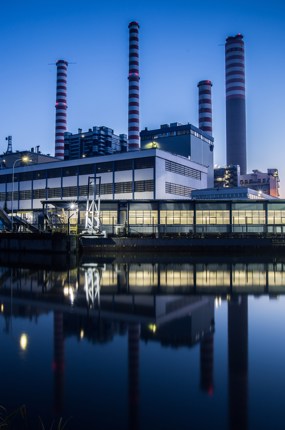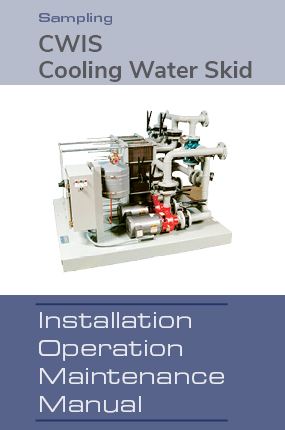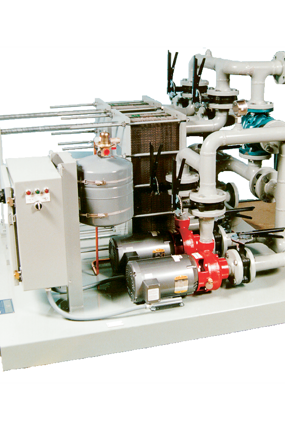CWIS Cooling Water Isolation Skid
Part #: 7-06539
Get Started
Request A QuoteStill Have Questions?
Contact Us
Sentry's CWIS Cooling Water Isolation Skid helps control the negative consequences associated with water and temperature inconsistency.
By recirculating clean water behind a plate and frame heat exchanger, the CWIS protects your sample coolers from plant service water and ensures scaling/fouling is eliminated. The cooling water isolation skid moves beyond protecting coolers by maintaining a constant temperature and pressure with an included pump.
- The CWIS Water Isolation Skid controls temperatures within ± 4°F (2°C), with optional close temperature control of ± 1°F (0.5°C).
- Maintaining flow is easy with the CWIS’ optional dual pumps, manual control, and automatic switch over functions.
- Built for seasonal or plant related fluctuations, this cooling water skid ensures that your sample system is isolated from chemicals and dissolved particles from plant service.
| Model | Recirculating Flow | Power |
|---|---|---|
| CWMS-35 | 35 GPM | 1.3 KVA |
| CWMS-80 | 80 GPM | 3.6 KVA |
| CWMS-140 | 140 GPM | 5.8 KVA |
Related Resources
Learn more about how the CWIS Cooling Water Mixing Skid can benefit your application with the following resources.
Need Something Else?
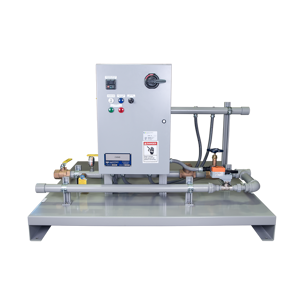
CWMS Cooling Water Mixing Skid
Manage insufficient water pressure or seasonal temperature variations efficiently with Sentry's CWMS Cooling Water Mixing Skid.
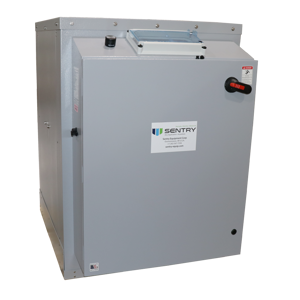
TCU Sample Chiller
Have confidence in your sample temperatures with Sentry's Temperature Control Unit. Used in conjunction with a secondary cooling system, these units can handle a wide variety of heat loads all while cooling water within 1 F (0.5 C) of target.



